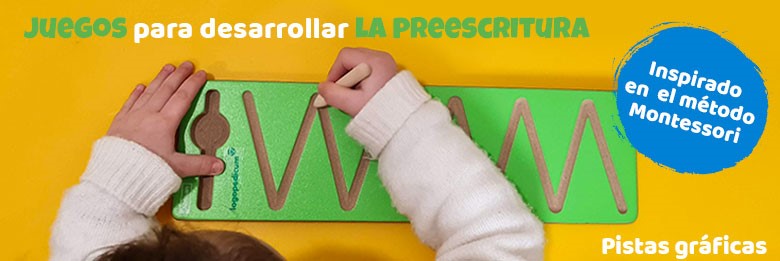
Aprender es modificar o adquirir nuevas habilidades, destrezas, conocimientos, conductas y valores mediante la experimentación, el estudio, la observación, el razonamiento o la instrucción. Múltiples y variados juegos disponibles hoy en día, desde los más clásicos hasta los más innovadores, pueden ser grandes herramientas para construir una variedad de aprendizajes: lectoescritura, matemáticas, razonamiento y resolución de problemas, etc. aportando motivación e interés a los jugadores. Más allá de la estimulación de las inteligencias múltiples, fomentaremos la autoestima, incentivaremos la cooperación y el trabajo en equipo y mejoraremos el comportamiento y la actitud, entre otros muchos aspectos.
 Auditory Memory Caterpillar
29,90 € (VAT not included)
Auditory Memory Caterpillar
29,90 € (VAT not included)
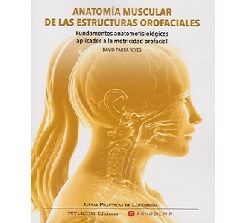 ANATOMÍA MUSCULAR DE LAS ESTRUCTURAS OROFACIALES. Fundamentos anatomofisiológicos aplicados a la motricidad orofacial
Sold out (VAT not included)
ANATOMÍA MUSCULAR DE LAS ESTRUCTURAS OROFACIALES. Fundamentos anatomofisiológicos aplicados a la motricidad orofacial
Sold out (VAT not included)
 Los trastornos de la atención y la hiperactividad
34,90 € (VAT not included)
Los trastornos de la atención y la hiperactividad
34,90 € (VAT not included)
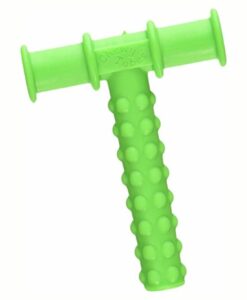 Chewytube green
9,90 € (VAT not included)
Chewytube green
9,90 € (VAT not included)
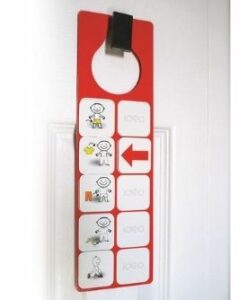 Vertical door support
8,90 € (VAT not included)
Vertical door support
8,90 € (VAT not included)
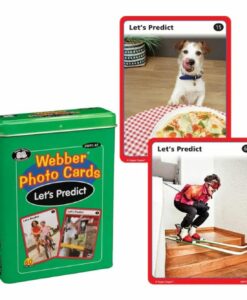 Let's predict!
18,50 € (VAT not included)
Let's predict!
18,50 € (VAT not included)
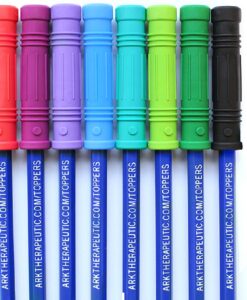 Rough pencil teether
9,99 € (VAT not included)
Rough pencil teether
9,99 € (VAT not included)
Showing 109–144 of 144 resultsSorted by latest
Price filter
No account yet?
Create an Account130 foam letters, 5 cm high, of different colors that can be aligned to compose syllables, words,... Very interesting resource in literacy learning, as it allows to create multiple and varied phonological awareness activities such as: phoneme-grapheme correspondence, analysis and location of sounds and letters, syllabic segmentation, etc. Includes a plastic box for storage and transportation.
https://logopedicum.com/wp-content/uploads/2015/07/letras-de-espuma-247x300.jpg 11.98 instock Areas of DevelopmentHearing and languageReading and writingLearning CornersReading and writingLANGUAGEPhonetics and phonologyLEARNINGSReading and writingWood 0 0.00 0 https://logopedicum.com/wp-content/uploads/2015/07/letras-de-espuma-247x300.jpg 2144168521527401783 11.98 9.90 0.00 0.00 2015-07-20T10:33:46+02:00The reduction of dyslexia sometimes leads to repetitive exercises of graphic and sound type that, besides being insufficient, can be boring. This material presents a different approach, with varied stimuli and exercises, supported by the following materials:
1. A guide book, with abundant ortho-drawings and an extensive list of exercises and activities, based on the vision of words and drawings. 2. A CD-ROM with more than 400 ortho-drawings, accompanied by the sound of the corresponding word, which can be heard as a whole or by isolated syllables. The association of drawing and word helps in a very effective way to facilitate reading, even of long or complex words. It has 132 exercises in which the drawings can be seen fixed or moving, in addition to hearing their words. Example: monk and sheep are animated by clicking on them.
Seeing the pictures and hearing the sound of veterinarians, bubbles, or whizzes helps to cope with vocabulary that was almost insurmountable in the usual methods. 3. A touch box with a curtain into which children put their hands to blindly identify letters, objects or spatial structures and diagrams. 4. An alphabet with raised letters that allow them to discriminate by touch doubtful letters: b, p, t; q, g; n, u, as well as confusing syllables: pra, par, las, sal. 5. Orthographic memory cards. There are 72 pairs of cards, one with a drawing and a word mounted, the other with the drawing without the word. With these cards you can do exercises of spatial perception, identification of shapes, invention of sentences or short stories, etc.
Text in Spanish. https://logopedicum.com/wp-content/uploads/2019/05/portada40-247x223.jpg 64.48 instock Areas of DevelopmentLEARNINGSReading and writingReading and writingWood 0 0.00 0 https://logopedicum.com/wp-content/uploads/2019/05/portada40-247x223.jpg 740115617791612786 64.48 62.00 0.00 0.00 2019-09-17T16:21:42+02:00A large selection of beads and letters of the alphabet, in different shapes and colors, can be threaded to create peculiar jewelry. Beyond being a resource to decorate arms and necks, it will be very interesting in literacy learning as it allows us to create multiple and varied phonological awareness activities such as: sound-letter correspondence, analysis and location of sounds and letters, syllabic segmentation, etc.
The set contains a wide variety of elements, stringing threads,... as well as a wooden sorting and transporting box.
https://logopedicum.com/wp-content/uploads/2017/01/perlas-y-abecedario-para-ensartar-247x300.jpg 24.08 instock 3 – 6 years6 – 9 yearsAGEAreas of DevelopmentFine motor skillsGAME TYPEGAMES AND TOYSHearing and languageJuegos de aprendizajeLANGUAGELanguage gamesLEARNINGSMotor skillsPhonetics and phonologyReading and writingReading and writingReading and writing gamesTYPE OF TOYWood 0 0.00 0 https://logopedicum.com/wp-content/uploads/2017/01/perlas-y-abecedario-para-ensartar-247x300.jpg 1910161222821941783 24.08 19.90 0.00 0.00 2017-01-19T19:43:14+01:00The box contains 30 counters (30 x 20.5 cm) and 1 teaching guide.
In most cases, the child should never limit himself/herself to working in isolation and in silence; rather, the work will be characterized by a constant oral elaboration of the situations that arise and by the application of all the resources available to the trainer in order to get the most out of each task. One must always be alert to detect those situations in which the child has greater difficulty and be able to determine whether it is strictly a failure to understand what has been read (caused by a possible distraction, by reading too fast, by omitting a word that alters the meaning of the sentence, etc.) or whether the problem lies in the fact that the child has not previously incorporated the concept to which reference is made. For example: if the child has to identify whether the ball is on top, underneath, to the right of the table, etc., and solves it incorrectly, it is possible that he/she has not yet clearly acquired these concepts. In such a situation, work will be backtracked to affirm these spatial notions as the reeducator sees fit.
These exercises can be applied in both individual and group sessions. In the case of group sessions, the speech therapist or teacher will be free to select, adapt or vary the work, according to the average level of learning possibilities of the group of students he/she attends.
Text in Spanish. https://logopedicum.com/wp-content/uploads/2022/01/Fichas-de-Lenguaje-y-Lectura-Comprensiva-1-247x300.jpg 13.50 instock Areas of DevelopmentBooksLEARNINGSReading and writingReading and writingReading and writingWood 0 0.00 0 https://logopedicum.com/wp-content/uploads/2022/01/Fichas-de-Lenguaje-y-Lectura-Comprensiva-1-247x300.jpg 47274021401798226 13.50 12.98 0.00 0.00 2022-01-20T10:22:12+01:00A set of 26 letters of the alphabet, in linked or school letters, made of a rough material so that they can be worked by touch. The child's fingers are guided by the rough shapes. The vowels are on a pink background and the consonants on a blue background. The silhouettes of the letters are attached to a sturdy rigid plastic base and are connected by a removable ring, which is removable to promote associations, classifications and sorting. This material provides an extra sensory stimulus in the development of reading and writing.
The box contains:
From 3 years old.
https://logopedicum.com/wp-content/uploads/2023/01/Abecedario-texturas-cursivas-247x300.jpg 31.31 instock MontessoriAreas of DevelopmentSensory stimulationReading and writingLearning CornersReading and writingLEARNINGSReading and writingMULTISENSORY STIMULATIONThe 5 sensesWood 0 0.00 0 https://logopedicum.com/wp-content/uploads/2023/01/Abecedario-texturas-cursivas-247x300.jpg 17972194176417791910 31.31 25.88 0.00 0.00 2023-01-13T19:25:07+01:00ABC Dyslexia is a structured and sequential sequential program designed specifically for dyslexic dyslexic school childrenIt can also be used by children who have difficulty learning to read and write. It is composed of four modulescorresponding respectively to the letters B, D, P y TThe difficulties posed by each of these letters are addressed through numerous activities. Emphasis has been placed on these letters, since they are the most difficult for children with dyslexia.
The program works jointly on the development of phonological awareness and the learning of grapheme-phoneme correspondences from a multisensory methodology, since several studies have shown that this approach produces more significant progress in reading and writing. Other written language processes are also considered, such as automation and reading comprehension, handwriting quality and text production.
Each module consists of an attractive activity booklet for the student and a teacher's manual that explains the activities in detail and includes the necessary evaluation records to check the child's progress and adapt the intervention to his or her needs.
Includes: